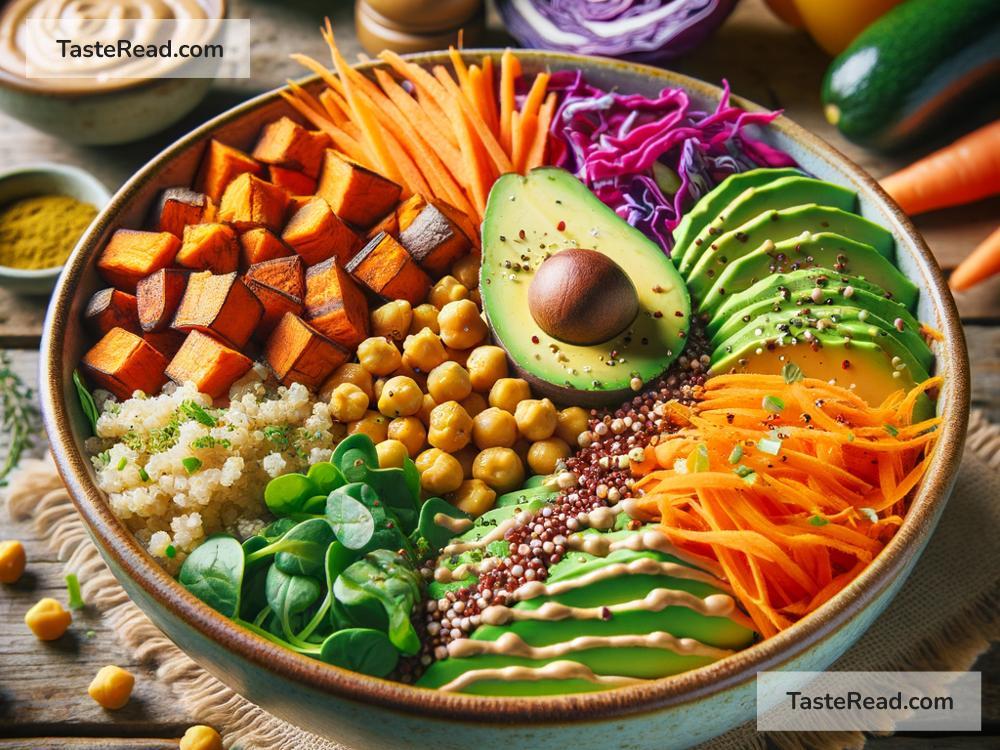How to Create Vibrant Buddha Bowls: A Step-by-Step Guide
If you love healthy, delicious food that’s as pleasing to the eye as it is to your taste buds, Buddha bowls are the perfect dish to try. A Buddha bowl is a colorful, nutrient-packed meal in a bowl, typically made up of grains, veggies, proteins, and toppings like sauces or seeds. They’re easy to make, endlessly customizable, and a great way to use up leftovers. Whether you’re cooking for yourself or impressing guests, Buddha bowls are a fantastic addition to your recipe repertoire. Let’s dive into how to create vibrant Buddha bowls in simple steps!
What is a Buddha Bowl?
A Buddha bowl is a balanced, one-bowl meal often made with plant-based ingredients, though you can include meat or fish if preferred. The concept is simple: layer different components like grains, proteins, vegetables, and drizzle them with a tasty sauce. You can play with colors, textures, and flavors to create a bowl that feels fresh and exciting every time. Why is it called a Buddha bowl? Some say it represents the ’rounded belly’ of a Buddha, while others think of it as a wholesome, mindful way of eating.
Step 1: Choose Your Base
The base is what forms the foundation of your Buddha bowl. Ideally, you want something hearty and filling, like grains or greens. Some great options for a base include:
- Grains: Brown rice, quinoa, couscous, farro, or barley.
- Leafy Greens: Spinach, kale, romaine, or mixed lettuce for a lighter option.
- Other Bases: Cauliflower rice, zucchini noodles, or mashed sweet potatoes.
Cook your grains according to the package instructions or wash your greens for a fresh, crisp start.
Step 2: Add Colorful Veggies
The beauty of Buddha bowls lies in their visual appeal, which means adding a variety of colorful vegetables. You can use raw, roasted, steamed, or sautéed veggies—whatever you prefer! Here’s some inspiration:
- Raw Veggies: Shredded carrots, sliced cucumbers, cherry tomatoes, or bell peppers.
- Roasted Veggies: Sweet potatoes, broccoli, zucchini, or cauliflower.
- Steamed Veggies: Asparagus, green beans, or edamame.
Feel free to mix textures. For example, combine crunchy raw veggies with tender roasted ones for variety.
Step 3: Pick Your Protein
Protein keeps your bowl satisfying and ensures you’re full of energy. You can go plant-based or include animal-based proteins depending on your diet. A few protein options include:
- Plant-Based Proteins: Chickpeas, tofu, tempeh, lentils, or black beans.
- Animal-Based Proteins: Grilled chicken, salmon, shrimp, or boiled eggs.
For a crispy twist, bake or sauté your tofu or tempeh with olive oil and seasonings.
Step 4: Add Healthy Fats
Healthy fats add richness and flavor to your bowl while contributing to a balanced meal. These come in many forms:
- Avocado: Slice or mash it for creamy goodness.
- Nuts and Seeds: Sprinkle on pumpkin seeds, sesame seeds, almonds, or walnuts.
- Dressing or Sauce: Tahini, olive oil, or a nut-based sauce like cashew cream adds the perfect touch.
Make sure to keep your portion moderate for fats since they’re calorie dense.
Step 5: Finish with Toppings
Toppings take your Buddha bowl to the next level! They add crunch, zest, or a pop of extra flavor. Some topping ideas include:
- Herbs: Fresh cilantro, parsley, or mint.
- Crunchy Bits: Crushed tortilla chips, roasted chickpeas, or croutons.
- Extras: Lemon wedges, pickled onions, or nutritional yeast.
Toppings are where you can really get creative, so don’t be afraid to experiment.
Step 6: Drizzle the Sauce
Every Buddha bowl needs a great sauce to bring all the ingredients together. It’s like the magic touch that ties the flavors into one cohesive dish. Here are some easy sauce options:
- Tahini Dressing: Mix tahini, lemon juice, garlic, and a little water for creaminess.
- Soy Sauce Blend: Combine soy sauce, ginger, garlic, and sesame oil for Asian-inspired bowls.
- Simple Vinaigrette: Olive oil, balsamic vinegar, mustard, and honey can work wonders.
Don’t pour too much—just enough for a flavorful finish!
Step 7: Arrange Your Bowl
Once all your components are ready, it’s time to assemble your Buddha bowl. This is the fun part! Arrange each ingredient in sections so you can see the colors and textures clearly. Think of it as creating a work of art with your food. Start with the base, then layer your veggies, proteins, and toppings. Finally, drizzle the sauce and enjoy!
Tips for Making the Best Buddha Bowls
- Balance Flavors: Include salty, sweet, sour, and bitter notes for a harmonious taste.
- Use Fresh Ingredients: Fresh veggies and leafy greens make a huge difference in taste.
- Prep in Advance: Cook grains, roast veggies, and make your sauces ahead of time for quick assembly.
- Mindful Eating: Buddha bowls are a great way to practice mindful eating—take the time to enjoy each bite!
Why Make Buddha Bowls?
Buddha bowls are not just a meal—they’re a celebration of wholesome ingredients! They’re easy to customize, perfect for meal prep, and offer endless possibilities. Whether you’re aiming for a colorful Instagram-worthy dish or simply want to enjoy nutritious food, Buddha bowls are your answer.
So, grab your favorite bowl, pick your ingredients, and start layering. Once you master the basics, the combinations are limitless. Happy cooking!


